Black and white buildings
A look at the extensive collection of black and white buildings in Chesterfield over the years.
Black and white
Chesterfield has an extensive collection of black and white buildings. There are about 45 in the town centre alone. Most of the buildings date from the 1920s and 1930s and are linked to rebuilding due to street improvements in the town.
Their style was mainly a response to the fashion of the time for ‘Mock Tudor’ designs. This evolved from the Arts and Crafts movement of the nineteenth century which saw the shift from gothic style buildings to simpler designs of an earlier age. Percy Houfton, architectural advisor to the council, was a particular supporter of the movement.

Chesterfield’s first black and white building was actually built in 1891. North Lodge (shown above) in Queen’s Park was designed by architect and town councillor, Samuel Rollison. It was built before alternative plans for the park were adopted.
The designs of black and white buildings changed over time. In the 1920s they were half timbered but by the 1930s the black and white element was reduced with brick featuring more. By the late 1930s brick and stone dominated once more.
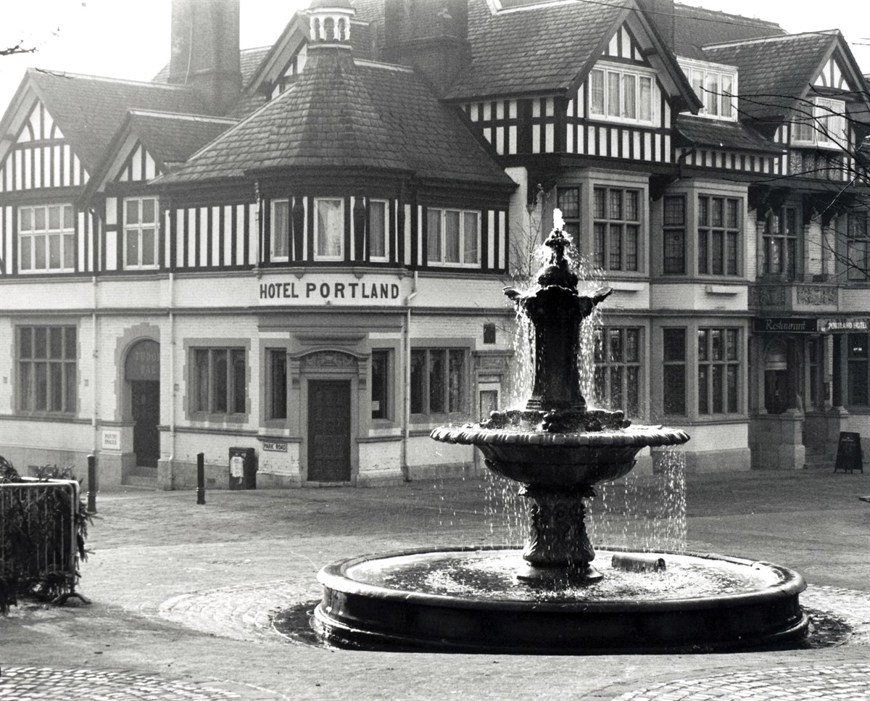
Another Victorian black and white building. The Hotel Portland was opened in 1899, taking advantage of the trade generated by the Lancashire, Derbyshire and East Coast Railway whose station was nearby.
Plans for the Picture House (now the Winding Wheel) on Holywell Street needed amending after being turned down in October 1921 for not complying with the building line prescribed by the Corporation for that area.
Knifesmithgate
The most striking series of black and white buildings in Chesterfield is on Knifesmithgate. The widening of the road and its extension to the west in the 1920s saw the demolition and redevelopment of many of the buildings.
The largest project was the Victoria Complex. The existing cinema, the Victoria Picture Palace, and the billiard hall were reconstructed and the complex redeveloped to include a café, restaurant and a large ball room as well as shops and Barclays Bank.
The new cinema and billiard hall opened in 1924 but it took until 1930 for the rest of the building to be completed. In 1957 the company, Victoria Enterprises, was sold. The billiard hall was closed and the cinema, renamed the Gaumont, followed in 1965.
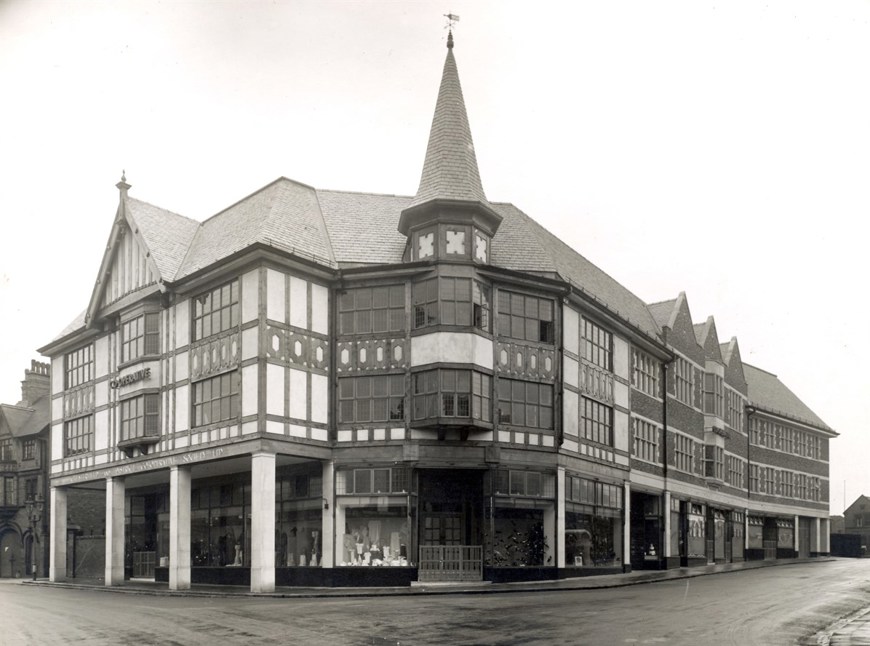
The Chesterfield Co-op building was one of the later additions to Knifesmithgate, opening in 1938.

Swallows was a long standing drapery business on the corner of Knifesmithgate and Packer’s Row. The building was rebuilt in 1930 with a black and white façade. Swallows closed in 1970 and the site was redeveloped.
All new buildings on Knifesmithgate, apart from Swallows, had colonnades. They are probably inspired a visit to Chester by a council committee who were investigating the extension of the first floor buildings to provide shelter for shoppers in wet weather. The visit may have also influenced the black and white design.
Black and white pubs
Many of the black and white buildings in the town were originally pubs. In the 1920s, licensing laws were being strengthened. Public houses could be closed down if they were not ‘fit for purpose’.
As a result it was in the best interests of the brewery companies to rebuild several of the town centre pubs at the same time as the street improvements in Chesterfield were being carried out.
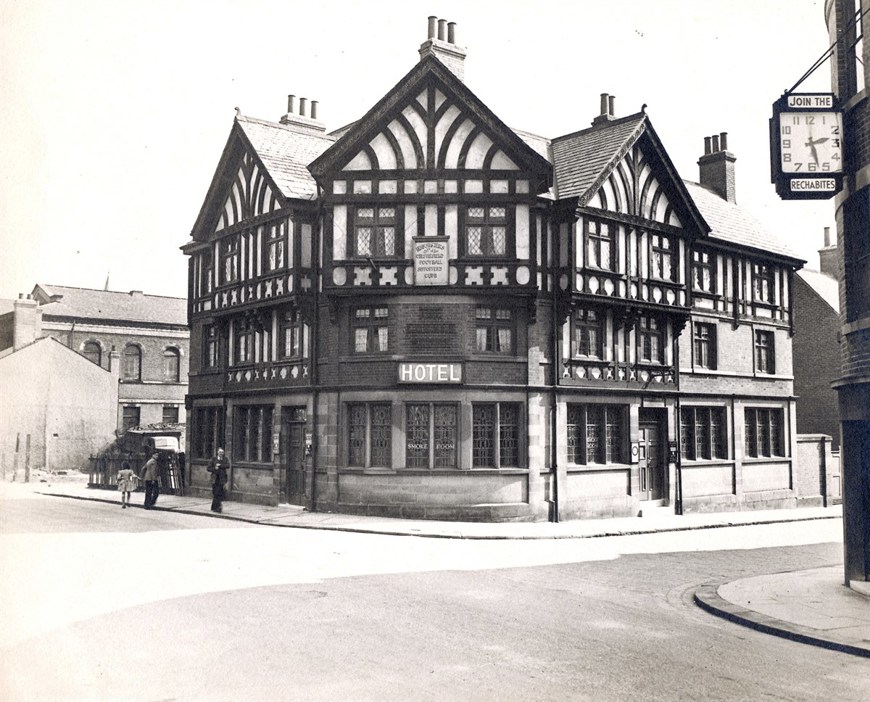
Pictured here is the Corner House Hotel; originally the Miner’s Arms. The owners, Scarsdale Brewery, agreed to give up the land needed to round off this corner of Glumangate and Saltergate to the extent of 7 feet 6 inches in depth.
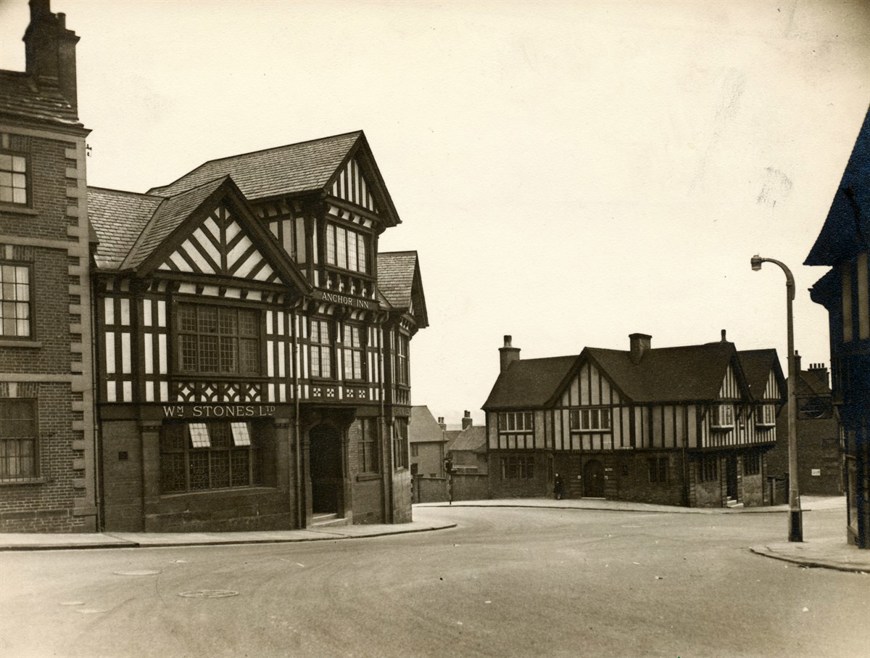
The Ship, owned by Brampton Brewery, is also shown here. The Anchor, a William Stones pub, followed over the road a year later. This resulted in the road widening at the Vicar Lane and St Mary’s Gate junction.
The Lord Nelson on Cavendish Street was last black and white pub in the town to be built and one of the largest owned by William Stones Brewery.
The Old Feathers on St Mary’s Gate was demolished in 2003. It was designed by Percy Houfton and built by Chesterfield Borough Council who leased it then sold it to the Home Brewery. Plans for the building had been submitted in 1914 but it was not built until after the First World War.
The plans for the Red Lion on Vicar Lane, submitted by the brewery, William Stones, in 1914, described it as ‘the Old English style’. The pub closed in 1989 and was demolished ten years later as part of the Vicar Lane shopping development.
Timber framed buildings
Many black and white buildings are not actually fully timber framed. The timber framework is not integral to the overall structure of the building. Many are simply half timbered or have a ‘surface only’ design.
There are only three true timber framed buildings in Chesterfield. The oldest is the former Peacock Inn on Low Pavement, built around 1500. The second is the Royal Oak pub in the Shambles, part of which was built in the sixteenth century. The third is a former coaching inn, the Falcon, on the corner of South Street and Low Pavement.
The Royal Oak building has undergone many changes and roles throughout its life. The first mention of its use as a pub is 1772 but parts of it have also been used as a house and butchers shops. It is now a Grade II* listed building.
After purchase by William Stones Brewery in 1897, the Royal Oak underwent extensive renovation. Many rotten timbers were replaced.

After restoration, the Peacock Inn building was used as Chesterfield’s Tourist Information Centre (called the Peacock Centre). The timber frame can be seen clearly in the first floor exhibition room.
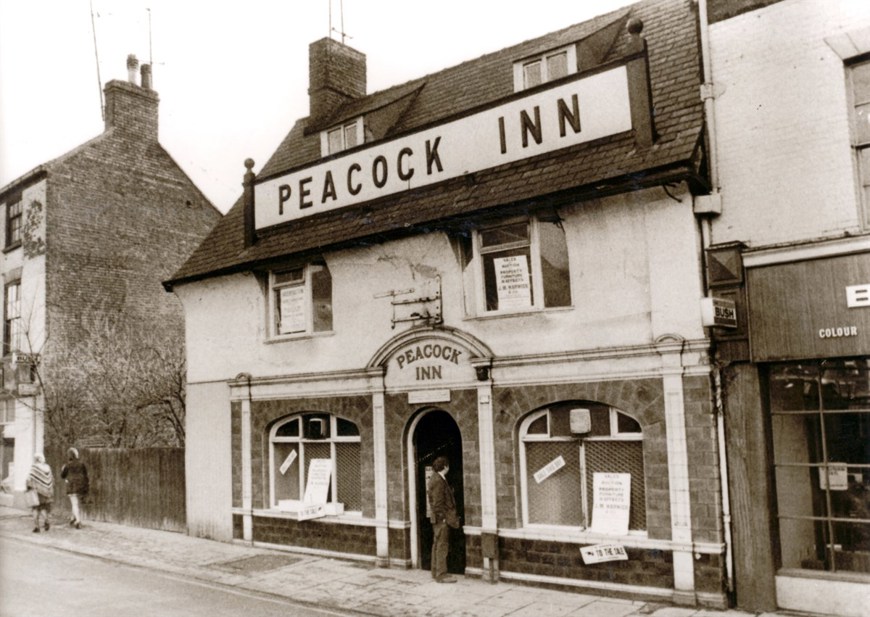
For many years the timber frame of the Peacock Inn was hidden behind a plaster façade. It was only after heavy restoration in 1978 that the timber construction was revealed.
The Peacock was a larger building when originally built, it was possibly a public building of some kind but by the 1680s, it was a private home to a wealthy family.
Despite being a timber framed structure, the black and white features of this building are not the actual frame but a nineteenth century addition.
Developing the town
In the 1920s and 1930s Chesterfield Corporation undertook an ambitious programme of street improvements in the town centre. Chesterfield’s medieval road pattern had evolved over the centuries. The result was narrow streets and bottlenecks which was completely unsuitable for cars, buses and trams.
Knifesmithgate was extended, Vicar Lane was widened and a new road, Church Way, was built. The project required a lot of redevelopment and many of the black and white buildings in the town were built at this time.
As the twentieth century progressed, narrow streets and tight corners in Chesterfield’s town centre were becoming increasingly hazardous. Not only was the number of motor vehicles on the road increasing, but the streets also accommodated the tram system.
The Chesterfield Corporation Improvement Bill in 1913 proposed 24 street improvements and work began on Lordsmill Street. The outbreak of the First World War in 1914, brought the project to a halt. Work did not commence again until 1919.
Plans to improve Chesterfield’s roads were drawn up as early as 1900. However due to the costs involved, the scheme did not progress. Only Markham Road was built in 1912 as the costs were met by Charles Markham himself. By the 1920s financial assistance was available to councils for road improvements.
Before the road improvements, the opening of Vicar Lane next to the Commercial Hotel on South Street was just 11 feet (3m) wide. It was known at the time as Death Corner presumably because of the number of accidents.
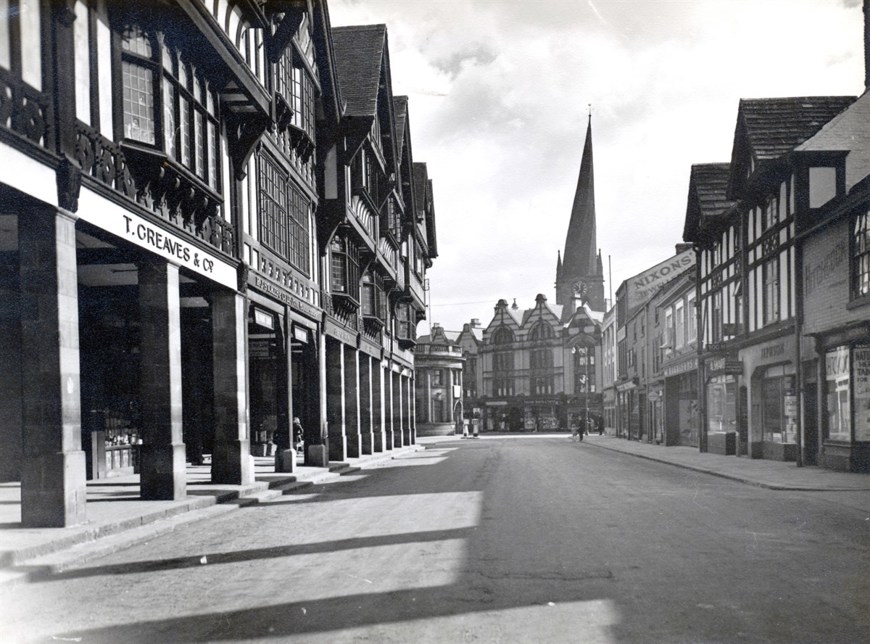
The road improvements certainly opened up the streets. This view of Knifesmithgate shows the widened street after the project was completed.